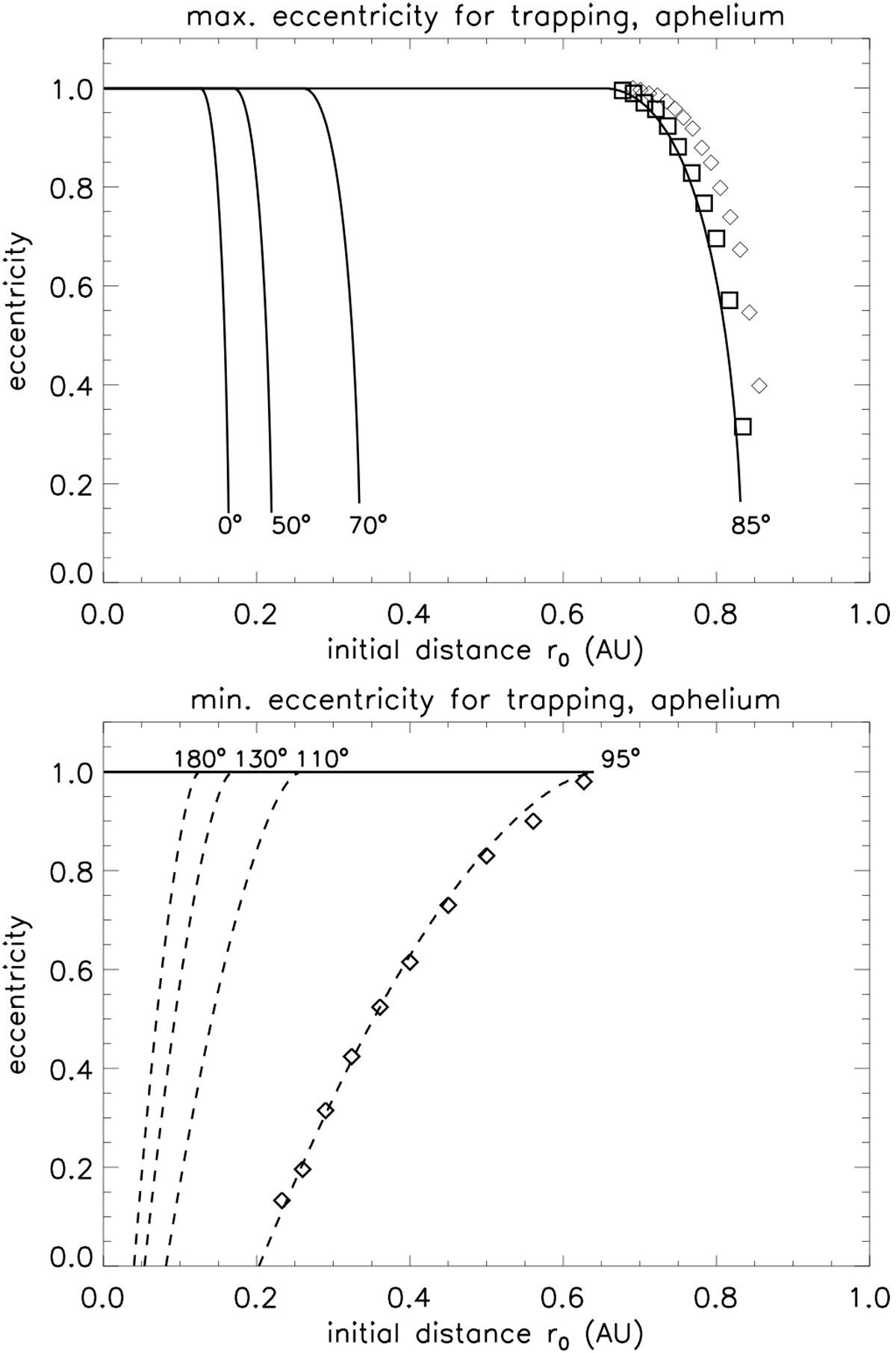Fig. 7

Limits on eccentricity of the parent body orbit imposed by trapping of nanodust emitted from the aphelium of the orbit. The argument of perihelium is 90°. Eight values of orbital inclinations are considered: four prograde: 0°, 50°, 70°, and 85° (upper panel) and four retrograde: 95°, 110°, 130°, and 180° (lower panel). When the nanodust is emitted near to the (inclination-dependent) outer limit of the trapping region, the trapping requirement limits the eccentricity of the orbit from above (the prograde orbit, upper panel, solid lines) or from below (the retrograde orbit, lower panel, dashed lines). For retrograde orbits, the trapping region is less extended than for prograde ones. Also shown are results from numerical simulations (slow wind only) for the grains with Q∕m = 10−4 e/mp (diamonds) and Q∕m = 3 × 10−4 e/mp (squares). In these cases the PR drag has no appreciable effect on results. In the prograde case, the value of Q∕m had to be raised to 3 × 10−4 e/mp to obtain a good agreement with the phase space model.
Current usage metrics show cumulative count of Article Views (full-text article views including HTML views, PDF and ePub downloads, according to the available data) and Abstracts Views on Vision4Press platform.
Data correspond to usage on the plateform after 2015. The current usage metrics is available 48-96 hours after online publication and is updated daily on week days.
Initial download of the metrics may take a while.


